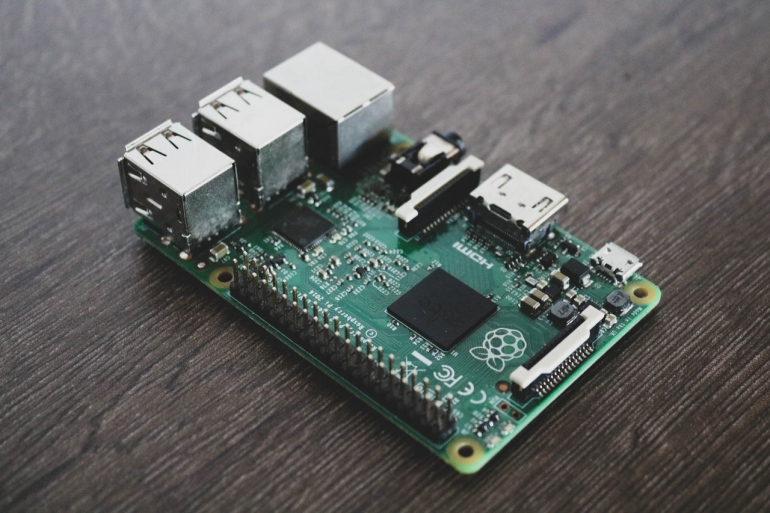Recent decades have witnessed a substantial transformation in the electronic arena. A new breed of devices- the single board computers (SBCs)- have made an impressive entry by increasing the potential of what engineers can develop. True to its name, an SBC is an entire computer built onto a single circuit board including a microprocessor, memory, and input/output (I/O) ports. But unlike a desktop or personal computer (PC), everything in an SBC is self-contained within its simple architecture. It doesn’t provide room for expanded peripheral functions through expansion slots as in a PC. An SBC doesn’t require additional memory or storage to boot nor does it demand a great deal of power.
Why choose an SBC?
Though an SBC cannot do many of the functions that a modern PC can, the difference in design and construction highlights its unique purpose. With the Internet of Things and the increase in machine-to-machine computing, there is an increasing demand for quicker and more focused product design. A single board computer provides an ideal platform by cutting size, power consumption, and costs. It allows engineers to find new ways to develop products that are more intelligently suited for a special job while simultaneously enhancing performance. SBCs can be found just about everywhere, in ATMs, automated checkouts, medical diagnostics, precision agriculture, etc. As they continue to evolve in sophistication, so too will their capabilities and the range of possibilities of their applications.
Who uses them?
SBCs emerged owing to the increase of integrated circuit density alongside a reduction in the number of circuit boards while eliminating connectors and bus driver circuits. With their smaller overall size and lower costs, numerous systems can be devised by putting all the functionalities on one board.
The emerging requirement for the next generation is low power single board computers. SBCs can be found in a wide range of devices for industrial, commercial and consumer applications. Design engineers, hobbyists, learners, and experimenters now have a variety of SBCs to choose from, but the criteria that govern their choices are the needs of the industry, application guidelines, and deployment environment. Here are a few of the factors that matter the most in SBC evaluation and selection.
Open platforms
Engineers aim at refining their devices to provide customizable options to the industry. Having access to relevant hardware and software from the beginning makes an SBC easy to integrate. Most SBCs are designed to support standard industry operating systems, so a single board computer must have an applications processor capable of running a high-level operating system like Linux, Android or just Window 7 download. This is especially beneficial as it accelerates developmental activities, reduces risks, decreases costs, and makes it easier to use. An SBC that provides royalty-free access to source code alongside compatible hardware that is functional and verified allows them to work with various architectures.
Form factor
Single Board Computers are available in a wide variety of standard form factors. As they continue to shrink, designers have the freedom to create new innovative devices and applications that are in demand. This permits them to be embedded in devices where space is very limited. For example, integrating higher levels of computing power with functions such as Bluetooth connectivity can be possible using an ARM-based System-on-Module (SoM) solution. Choosing an SBC design based on an SoM facilitates customization, where the customers can select the peripherals and interfaces according to the requirements.
Processor platform
Today, most of the SBCs include Intel, ARM or comparable central processing unit (CPU) architectures. The governing factor here is what processing power the application demands to achieve the desired results.
Out-of-the-box functionality
Where ever an SBC is used, it is typically in a very specialized embedded application. Therefore, it’s essential that the SBC performs reliably, no matter how environmentally challenging the situation may be. Certain industries are exposed to a great deal of vibration, shock, or varying temperatures. It’s necessary that the SCB can operate reliably without failure. In such cases, it’s also important that various components of the SBC are readily available. As ARM-based System-on-Chip (SoC) platforms are becoming more capable, it eliminates the need for connectors and expensive multilevel board designs. But most importantly, it increases the durability in rugged environments.
Low power consumption
A majority of ARM-based SBC designs can achieve excellent power efficiency, even those with quad-core processors as well as for those that require mobile or fixed-power applications. One of the greatest advantages of the ARM platform is its advanced power-saving mode which helps to minimize and tune power consumption for application-specific criteria. Moreover, it promotes the development of appropriate designs that are appropriate for use in any environment. Hence, the need for active cooling is eliminated, allowing a simplistic design model that is more reliable for an extended period of time.
Connectivity
The Internet of Things (IoT) is a crucial aspect in virtually all markets that have a desire to succeed. Therefore, an SBC offers complete connectivity options from the initial stages, especially because they can be easily integrated into any existing IT environment. Some of the common options include Wi-Fi connectivity link to an existing network, cellular connectivity for device integration, Bluetooth connectivity for data acquisition -important for systems linked to sensors, or Ethernet for wired network connections. The next generation of SBCs is taking advantage of secure cloud-enabled software platforms. As long as trusted communication is available, there are infinite opportunities to develop products on the cloud infrastructure.
SD-WAN and SDN are the small brothers of the networks defined by software. They are related, both are defined by software, but while SDN is intended for internal data centers in a headquarters. SD-WAN takes those similar software-defined concepts and decoupling the plane of control from the data plane to the WAN. “SDN is architecture, while SD-WAN is a technology that you can buy,” explains Andrew Lerner, an analyst at Gartner.
An SBC is a ready-to-use reference embedded platform that has all the necessary peripheral interfaces. Many are available at affordable prices, are conveniently portable, programmable, and have a lower power consumption- mere eight watts of power. Common SBCs that are currently high in demand Raspberry Pi, Arduino, and The Beagles, also known as BeagleBone Black. They are some of the most cost-effective and small sized single board computers on the market.







